Etruscan Civilization: Uncovering the Mysteries of Ancient Italy's Lost Culture
Who were the Etruscan civilization? Discover their mysterious origins, advanced art, unique language & how they influenced Rome through tombs, bronze work & forgotten rituals of ancient Italy.
Table of Contents
As an Italian local with a deep - seated passion for our nation's history, the Etruscan civilization holds a special place in my heart. Often overshadowed by the grandeur of the Roman Empire that followed, the Etruscans were a highly advanced and influential people who once dominated a significant portion of the Italian peninsula. Their culture, art, and social structures have left an indelible mark on the region, and exploring their story is like opening a window into a forgotten yet fascinating world.
Historical Overview
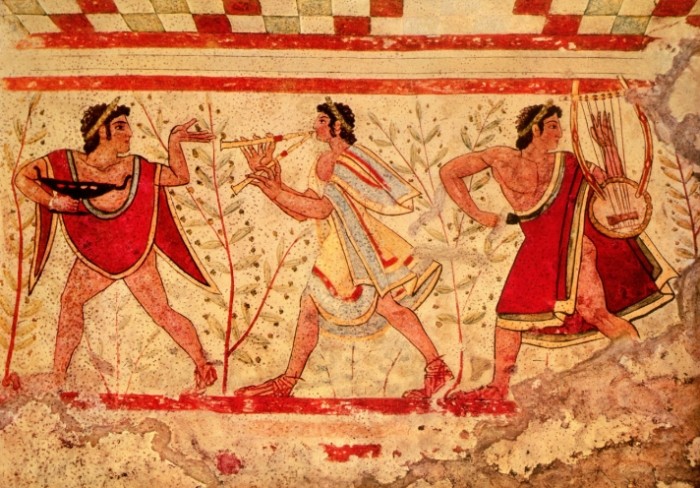
Origins and Early Settlement
The origins of the Etruscans are shrouded in mystery. One of the most widely debated theories is that they migrated to Italy from Anatolia (modern - day Turkey) around the 9th century BCE. This theory is supported by linguistic evidence, as the Etruscan language shows some similarities to the Lydian language spoken in Anatolia.
The Etruscans initially settled in a region that came to be known as Etruria, which encompassed parts of modern - day Tuscany, Umbria, and Lazio. They established a series of independent city - states, each with its own ruler and governing body. These city - states were centers of trade, culture, and political power.
Expansion and Peak
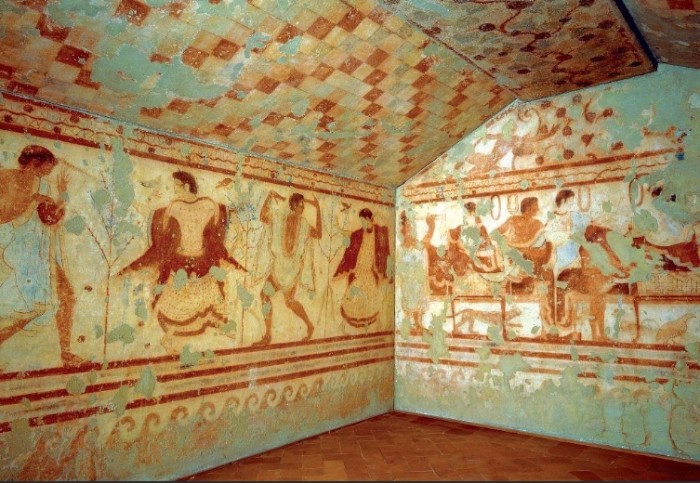
During the 7th and 6th centuries BCE, the Etruscan civilization reached its peak. They expanded their influence beyond Etruria, establishing colonies along the coast of the Tyrrhenian Sea and into the Po Valley. Their naval power allowed them to control trade routes in the Mediterranean, bringing wealth and exotic goods to their cities.
The Etruscans were also skilled engineers and architects. They built impressive cities with well - planned streets, advanced drainage systems, and monumental buildings. The city of Caere (modern - day Cerveteri) is a prime example, with its large necropolis featuring underground tombs that were decorated with elaborate frescoes and sculptures.
Decline and Integration
The decline of the Etruscan civilization began in the 5th century BCE. One of the major factors was the rise of the Roman Republic. The Romans, initially under Etruscan influence, gradually gained power and began to challenge Etruscan dominance. Military conflicts between the Etruscans and the Romans were frequent, and over time, the Romans emerged victorious.
By the 3rd century BCE, most of the Etruscan city - states had been conquered by the Romans. However, the Etruscans did not disappear overnight. Their culture was gradually absorbed into the Roman world, and many Etruscan traditions, art forms, and religious beliefs continued to influence Roman society.
Major Events
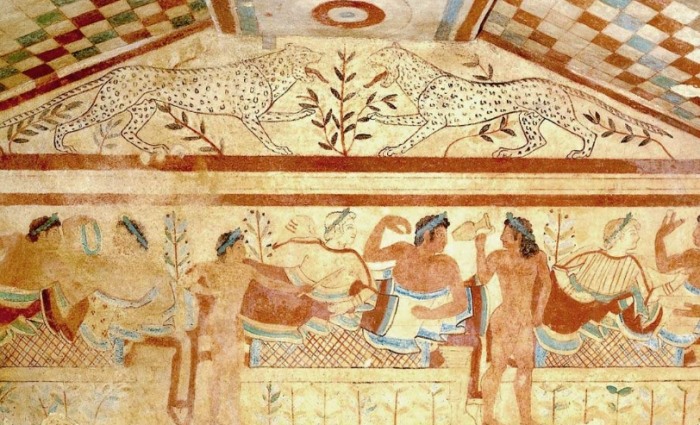
The Foundation of Rome
One of the most significant events related to the Etruscans is their role in the foundation of Rome. According to Roman tradition, the city of Rome was founded in 753 BCE by Romulus and Remus. However, historical evidence suggests that the Etruscans played a crucial role in the early development of Rome.
In the 7th century BCE, the Etruscans established a kingdom in Rome, known as the Etruscan Kingdom of Rome. They brought with them their advanced urban planning techniques, architecture, and religious practices. The Etruscan kings, such as Tarquinius Priscus and Tarquinius Superbus, ruled over Rome and introduced many reforms that shaped the city's future.
The Battle of Cumae
The Battle of Cumae in 474 BCE was a turning point in the Etruscan expansion. The Etruscans, along with their allies, the Carthaginians, faced off against the Greeks of Syracuse. The Greeks, under the leadership of Hiero I of Syracuse, defeated the Etruscan - Carthaginian alliance.
This defeat marked the beginning of the end for Etruscan naval dominance in the Mediterranean. It also weakened the Etruscan city - states' ability to control trade routes and expand their influence further.
The Roman Conquest of Veii
Veii was one of the most powerful Etruscan city - states. In 396 BCE, after a long - drawn - out siege, the Romans finally conquered Veii. This victory was a major milestone in the Roman - Etruscan conflict. It not only eliminated a major Etruscan rival but also provided the Romans with access to Veii's wealth and resources.
The conquest of Veii also demonstrated the growing military might of the Roman Republic and further eroded the Etruscan power base in central Italy.
Key Figures
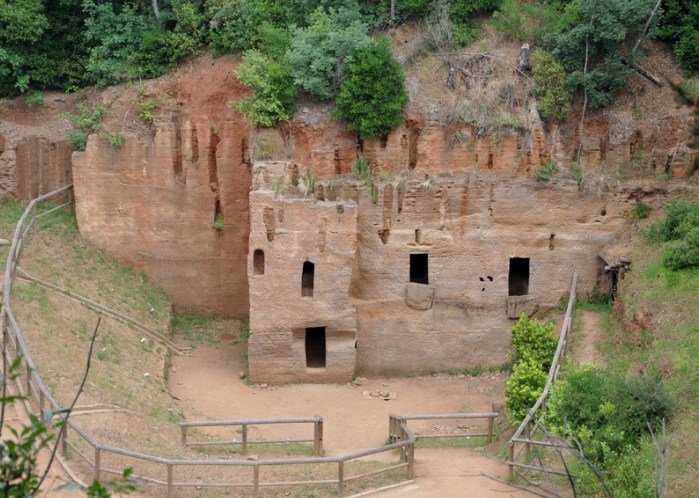
Lars Porsena
Lars Porsena was a legendary Etruscan king of Clusium. He is best known for his attempt to restore the Etruscan monarchy in Rome after the expulsion of the last Etruscan king, Tarquinius Superbus. In 508 BCE, he led an army against Rome.
Although he did not succeed in restoring the monarchy, his campaign was a significant event in the early history of Rome. His military prowess and the threat he posed to Rome forced the Romans to strengthen their defenses and develop new military strategies.
Tarquinius Superbus
Tarquinius Superbus was the last king of the Etruscan Kingdom of Rome. He ruled from 535 BCE to 509 BCE. His reign was marked by tyranny and oppression, which led to his overthrow by the Roman people.
Tarquinius Superbus is often portrayed as a negative figure in Roman history, but his rule also had some positive aspects. He continued the Etruscan tradition of urban development in Rome, building new temples and public buildings. However, his harsh rule ultimately led to the establishment of the Roman Republic.
Theoclides
Theoclides was an Etruscan sculptor who lived in the 6th century BCE. He is known for his works that showcase the Etruscan artistic style, which was characterized by its naturalism and attention to detail.
One of his most famous works is the "Sarcophagus of the Spouses," a terracotta sarcophagus that depicts a married couple reclining on a banqueting couch. This work is a masterpiece of Etruscan art and provides valuable insights into Etruscan social and cultural life.
Cultural Interpretations
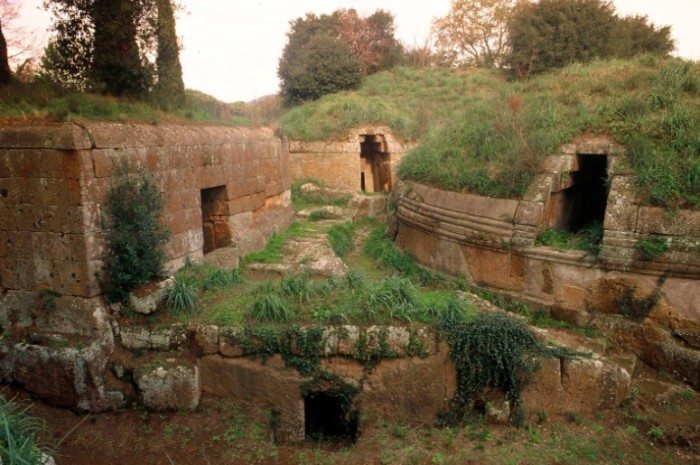
Art and Architecture
Etruscan art and architecture were highly distinctive. In art, they excelled in sculpture, painting, and metalwork. Their sculptures often depicted human figures in a relaxed and naturalistic pose, with a strong emphasis on facial expressions and body language.
Etruscan architecture was known for its use of large - scale structures and elaborate decorations. Temples were built with high podiums and multiple columns, and their interiors were richly decorated with frescoes and sculptures. The Etruscans also developed a unique style of tomb architecture, with underground tombs that were designed to resemble the homes of the living.
Religion and Beliefs
The Etruscans had a complex and highly developed religious system. They believed in a pantheon of gods and goddesses, many of whom were similar to those found in Greek and Roman mythology. However, their religious practices were unique.
Etruscan priests, known as haruspices, were skilled in interpreting the will of the gods through the examination of animal entrails. They also practiced divination through the observation of lightning and the flight of birds. Religion played a central role in Etruscan society, influencing everything from politics to daily life.
Social Structure
The Etruscan social structure was hierarchical. At the top were the aristocracy, who held political and military power. Below them were the merchants, artisans, and farmers. Slaves also formed a significant part of the Etruscan population.
Women in Etruscan society enjoyed a relatively high status compared to their counterparts in other ancient civilizations. They could own property, participate in religious ceremonies, and even attend banquets alongside men.
Timeline
| Period | Events |
|---|---|
| 9th - 8th century BCE | Etruscan migration to Italy and establishment of early settlements in Etruria |
| 7th century BCE | Rise of Etruscan city - states, expansion of influence, and foundation of the Etruscan Kingdom of Rome |
| 6th century BCE | Peak of Etruscan civilization, development of art, architecture, and trade |
| 5th century BCE | Decline begins with the Battle of Cumae and increasing Roman power |
| 4th century BCE | Roman conquest of major Etruscan city - states, including Veii |
| 3rd century BCE | Most Etruscan city - states conquered by the Romans, integration of Etruscan culture into Roman society |
Q&A
1. What race were the Etruscans?
The race of the Etruscans is a subject of ongoing debate among historians and archaeologists. There is no definitive answer, but the most widely accepted theory is that they were of Anatolian origin. Linguistic studies have shown similarities between the Etruscan language and the Lydian language spoken in Anatolia. However, over time, the Etruscans assimilated with the local populations of Italy, creating a unique cultural and ethnic blend.
2. Who wiped out the Etruscans?
The Etruscans were not wiped out in a single event. Their decline was a gradual process that was primarily caused by the rise of the Roman Republic. Through a series of military conflicts, the Romans gradually conquered the Etruscan city - states. By the 3rd century BCE, most of the Etruscan territories were under Roman control. However, the Etruscan culture and people did not disappear; they were absorbed into the Roman world.
3. Why did the Romans hate the Etruscans?
The Romans did not necessarily hate the Etruscans as a whole. In fact, the early Romans were heavily influenced by the Etruscans in areas such as urban planning, architecture, and religion. However, as the Roman Republic grew in power, conflicts between the two peoples arose. The Etruscans were seen as a rival power that needed to be subdued in order for Rome to expand its influence. Additionally, the Etruscan kings who ruled over Rome in the early days were often seen as tyrants by the Roman people, which may have contributed to negative perceptions of the Etruscans.
4. What did Etruscans look like?
There is limited physical evidence to definitively determine what the Etruscans looked like. However, artistic representations, such as sculptures and frescoes, provide some clues. These representations suggest that the Etruscans had a Mediterranean appearance, with olive - colored skin, dark hair, and dark eyes. Their facial features were often depicted in a naturalistic and individualized manner, reflecting their artistic style.